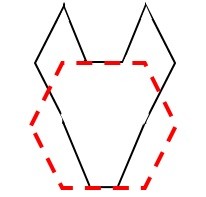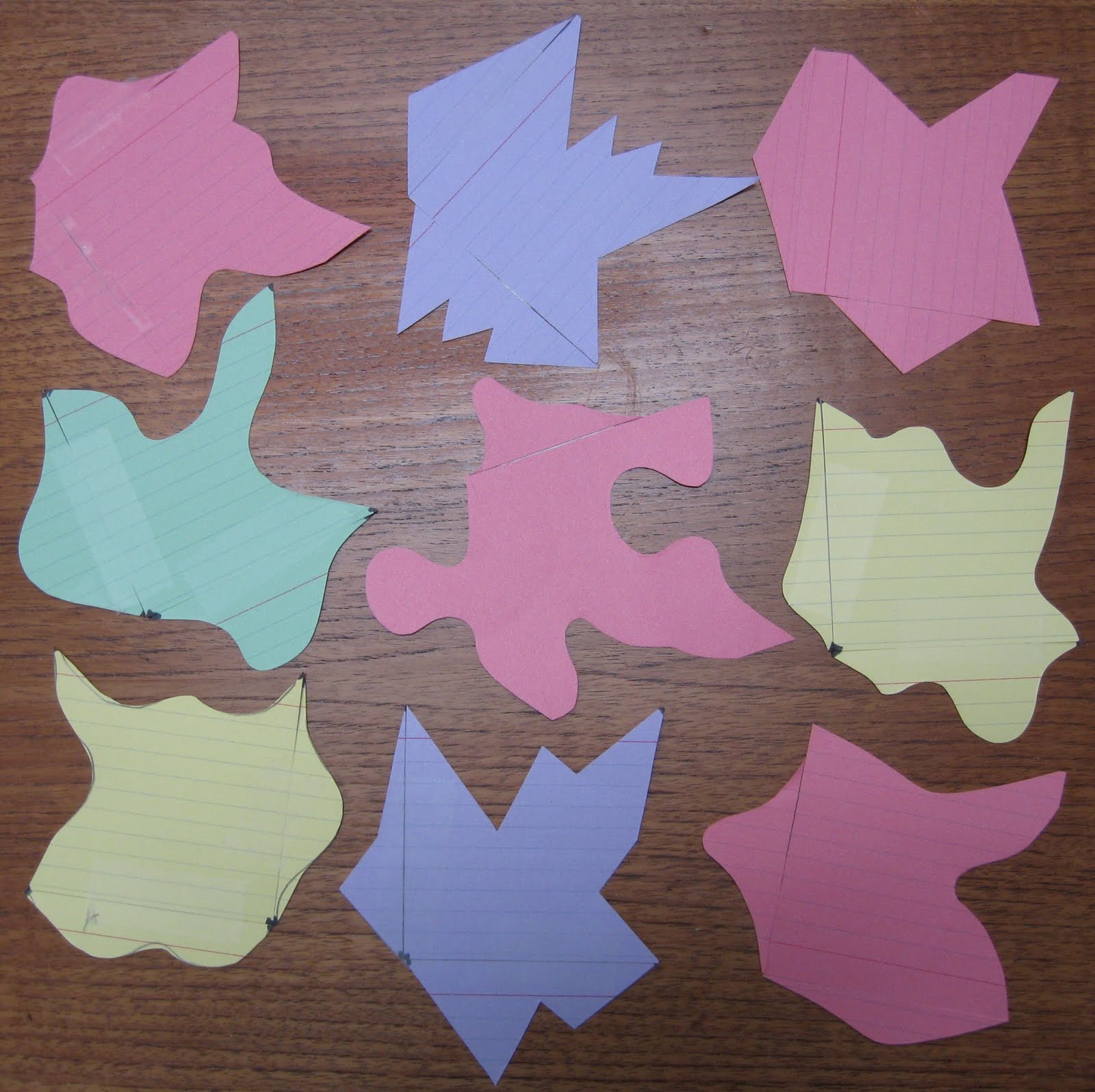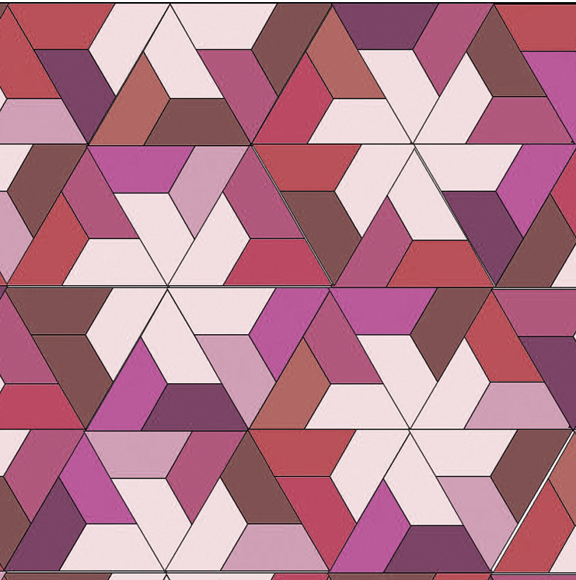
It is obvious from the diagram that they tessellate but we also know mathematically by doing 60 x 6 = 360. In the middle of the above diagram, 6 triangles meet at one corner. Regular polygons tessellate if the interior angles can be added. The same works for the equilateral triangle. A tessellation is a pattern created with identical shapes which fit together with no gaps. The square has a 90 degree angle and 4 squares meet in one corner, which means that you can check mathematically that they will tessellate. Where the corners meet, they will always add up to 360 degrees. For all the others, the interior angles are not exact divisors of 360 degrees, and therefore those figures cannot tile the plane. An interior angle of a square is 90 and the sum of four interior angles is 360. There are four squares meeting at a vertex. In Figure 10.102, the tessellation is made up of squares.

The craggy, hat-shaped tile can cover an infinite plane with patterns that never repeat. For a tessellation of regular congruent polygons, the sum of the measures of the interior angles that meet at a vertex equals. This works for the triangle, square, and hexagon. A new shape called an einstein has taken the math world by storm. Regular polygons in a tessellation must fill the plane at each vertex, the interior angle must be an exact divisor of 360 degrees. Tessellation Mathematics Grade 3 PeriwinkleWatch our other videos:English Stories for Kids. Tessellation is used to look appealing to the eye, such as in art work or in peoples home, for example, tiles on walls or floors.īelow is a demonstration on how I tessellated squares and regular triangles. Next, cut a shape from one side of your 3x3 card, and slide it to the opposite side of the card, without flipping it over or turning it.
Tessellation shapes how to#
There are different types of tessellation: regular, semi-regular and then other tessellations of circular, curved and irregular shapes that mathematicians agree on how to name. Therefore, tessellation is when shapes are repeated over and over again covering a plane without any gaps or overlaps. The most famous pair of such tiles are the dart and the kite.Ĭlick here for the lesson plan of non-periodic Tessellations.Tessellation is another word for tiling. The pattern of shapes still goes infinitely in all directions, but the design never looks exactly the same. In the 1970s, the British mathematician and physicist Roger Penrose discovered non-periodic tessellations. Whatever direction you go, they will look the same everywhere. They consist of one pattern that is repeated again and again. It may be better to show a counter-example here to explain the monohedral tessellations.Īll the tessellations mentioned up to this point are Periodic tessellations. All regular tessellations are also monohedral. Can a hexagon make a tessellation In geometry, the hexagonal tiling or hexagonal tessellation is a regular tiling of the Euclidean plane, in which three hexagons meet at each vertex. If you use only congruent shapes to make a tessellation, then it is called Monohedral Tessellation no matter the shape is. There are only three shapes that can form such regular tessellations: the equilateral triangle, square and the regular hexagon. You can use Polypad to have a closer look to these 15 irregular pentagons and create tessellations with them. What are tessellations Basically, a tessellation is a way to tile a floor (that goes on forever) with shapes so that there is no overlapping and no gaps. Among the irregular pentagons, it is proven that only 15 of them can tesselate. A Tessellation (or Tiling) is when we cover a surface with a pattern of flat shapes so that there are no overlaps or gaps.

We can use any polygon, any shape, or any figure like the famous artist and mathematician Escher to create Irregular tessellationsĪmong the irregular polygons, we know that all triangle and quadrilateral types can tessellate. The good news is, we do not need to use regular polygons all the time.

If one is allowed to use more than one type of regular polygons to create a tiling, then it is called semi-regular tessellation.Ĭlick here for the lesson plan of Semi - Regular Tessellations. He finds that he can tessellate with triangles, squares, hexagons, etc., but that pentagons, octagons. If you try regular polygons, you ll see that only equilateral triangles, squares, and regular hexagons can create regular tessellations.Ĭlick here for the lesson plan of Regular Tessellations. The child takes any shape and finds if it will tessellate.

the most well-known ones are regular tessellations which made up of only one regular polygon. There are several types of tessellations.


 0 kommentar(er)
0 kommentar(er)
